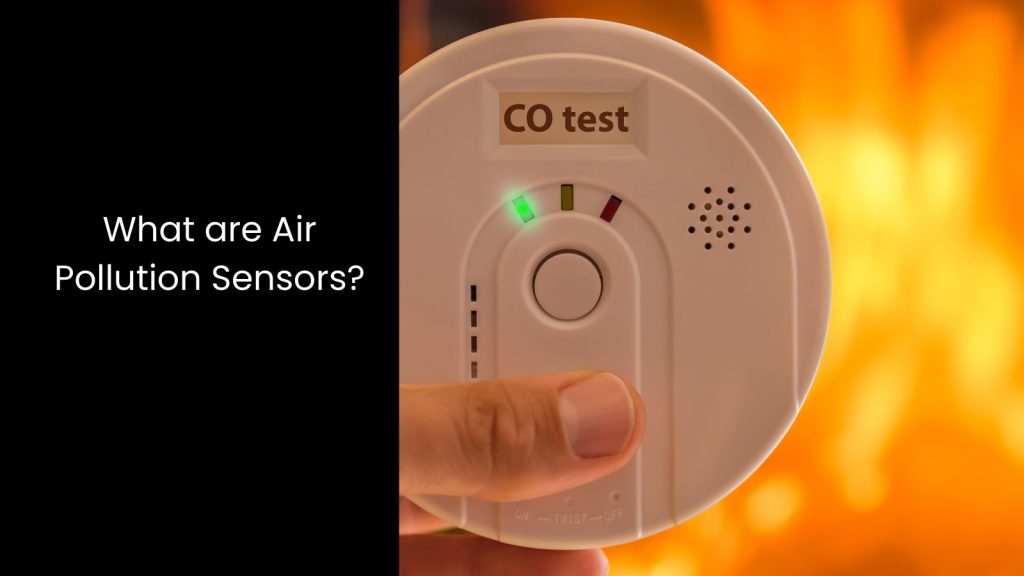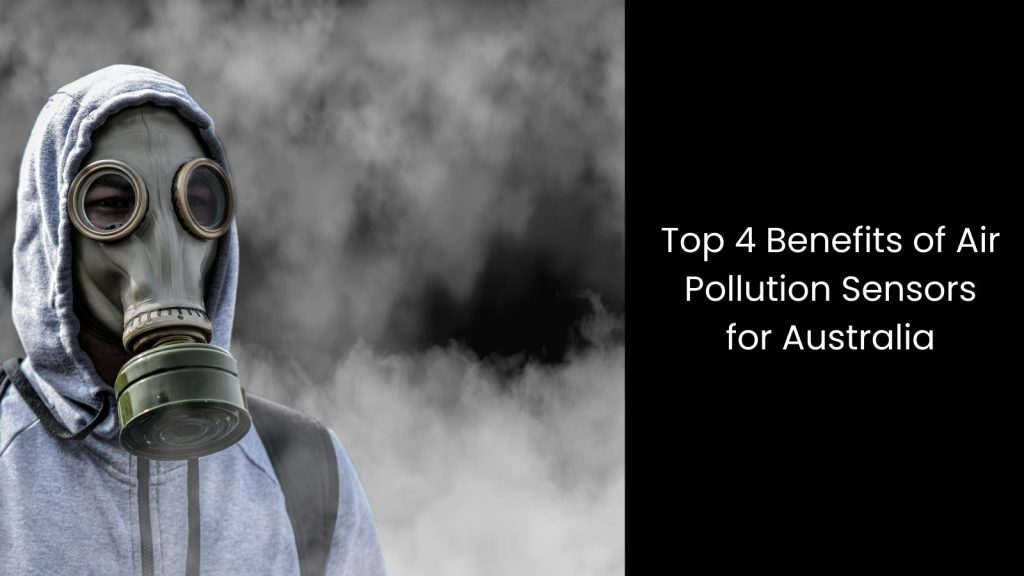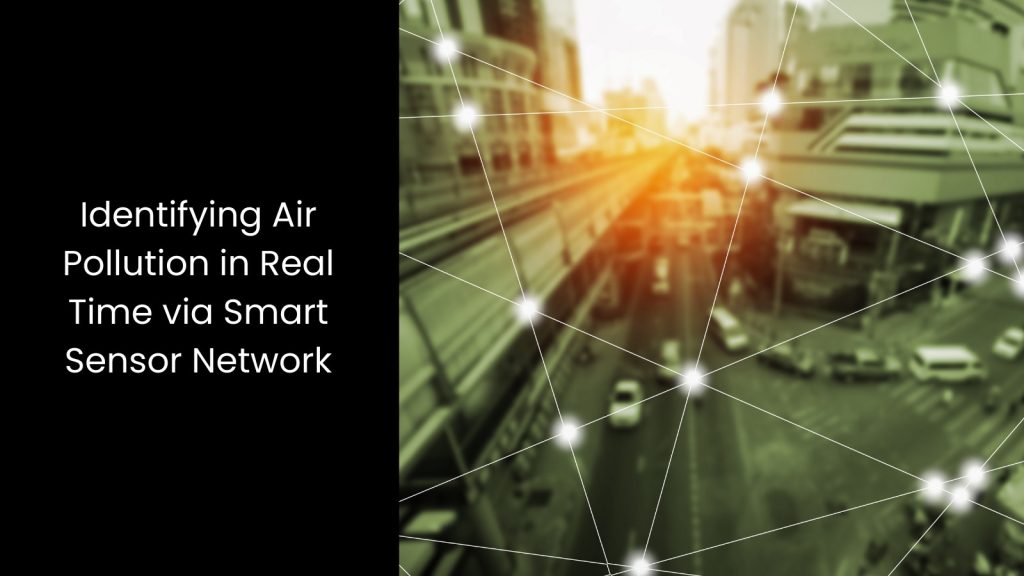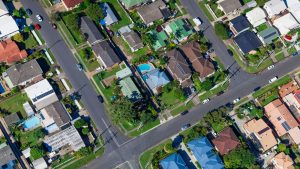Have you ever imagined living in a world where we cannot enjoy a leisurely walk in the park without worrying about the invisible pollutants destroying the air? For Australians, this reality is increasingly becoming a concern as air quality deteriorates due to factors like bushfires, industrial emissions, and vehicle exhaust. However, here comes a technological breakthrough offering a solution! That is ‘Air Pollution Sensors’.
In this article, we explore the top benefits of air pollution sensors for Australia.
In this article, we explore the top benefits of air pollution sensors for Australia.
What are Air Pollution Sensors?

- These sensors are central in monitoring and measuring air quality in different environments. These are the devices that can detect harmful pollutants such as nitrogen dioxide, carbon monoxide, sulphur dioxide, particulate matter (PM2.5 and PM10), and ozone in the air.
- As they capture real-time data, air pollution sensors help identify pollution sources and levels, allowing for quicker responses to deteriorating air quality. The best thing about them is that governments, responsible authorities, and industries can use this information to protect public health and make informed decisions on air quality improvements.
- In a land like Australia, air pollution sensors are especially important for monitoring emissions from industrial activities, traffic congestion, and natural events like bushfires, as they significantly affect air quality per year.
- These sensors usually come in portable or fixed installations, and they offer an affordable and scalable solution compared to traditional air quality monitoring stations. This technology forms an essential part of smart city infrastructure, where sensors continuously transmit data to centralised systems for real-time analysis and public accessibility.
Top 4 Benefits of Air Pollution Sensors for Australia

Real-time Monitoring
Air pollution sensors carry the ability to conduct real-time monitoring in Australia as they use advanced technology to detect and measure pollutants in the air. These sensors collect data on harmful substances like nitrogen dioxide, etc., all of which can negatively impact human health and the environment, as we mentioned before.
Now let’s move on to understand how this mechanism goes on. The sensors rely on specialised detectors that sense changes in the chemical composition of the air. They use electrochemical, optical, or laser-based technologies to measure these pollutants accurately. Once the sensors capture this data, they immediately transmit it to a central system through wireless networks or cloud-based platforms. This system processes the information and provides a real-time overview of air quality levels. So as you can see, the mechanism is quite complex.
As the most outstanding advantage, air pollution sensors provide real-time data on air quality, and this will encourage authorities to take immediate action to reduce exposure to harmful pollutants. In Australia, local councils, environmental agencies, and even individuals can access this data through apps or online dashboards.
It is totally unnecessary to say this real-time information helps authorities monitor pollution centres, such as industrial zones, highways, or areas affected by bushfires, allowing them to issue warnings or enforce regulations quickly. The technology also helps individuals plan their outdoor activities when air quality drops, ensuring that people with respiratory issues or other health concerns stay safe. The continuous flow of data from these sensors allows for dynamic tracking of air pollution trends, making it possible to respond quickly to sudden changes caused by weather patterns or human activities.
Now let’s move on to understand how this mechanism goes on. The sensors rely on specialised detectors that sense changes in the chemical composition of the air. They use electrochemical, optical, or laser-based technologies to measure these pollutants accurately. Once the sensors capture this data, they immediately transmit it to a central system through wireless networks or cloud-based platforms. This system processes the information and provides a real-time overview of air quality levels. So as you can see, the mechanism is quite complex.
As the most outstanding advantage, air pollution sensors provide real-time data on air quality, and this will encourage authorities to take immediate action to reduce exposure to harmful pollutants. In Australia, local councils, environmental agencies, and even individuals can access this data through apps or online dashboards.
It is totally unnecessary to say this real-time information helps authorities monitor pollution centres, such as industrial zones, highways, or areas affected by bushfires, allowing them to issue warnings or enforce regulations quickly. The technology also helps individuals plan their outdoor activities when air quality drops, ensuring that people with respiratory issues or other health concerns stay safe. The continuous flow of data from these sensors allows for dynamic tracking of air pollution trends, making it possible to respond quickly to sudden changes caused by weather patterns or human activities.
Environmental Protection
You may already be aware of the fact that environmental protection in Australia faces many challenges due to the country’s vast landscape, diverse ecosystems, and frequent natural events like bushfires and droughts.
As it seems, Australia’s unique ecosystems, including its rainforests, deserts, and coral reefs, are sensitive to pollution, climate change, and human activity. Also, industrial activities, mining, traffic congestion, and agriculture contribute to air pollution. This will affect both wildlife and natural habitats.
When there is continuous air quality monitoring, it will aid in detecting pollution sources, helping to safeguard Australia’s unique ecosystems, including its vast forests and wildlife. This is where the air pollution sensors come in as the best tools to support environmental protection in Australia by providing accurate, real-time data on pollutants.
These sensors work by using electrochemical, optical, or laser-based technology to detect changes in air composition. When pollutants reach harmful levels, sensors relay this information to centralised systems via wireless networks or cloud-based platforms. This data allows environmental agencies to pinpoint pollution sources, such as industrial plants or traffic-heavy areas, and take immediate corrective action.
Not to mention that this will help authorities respond quickly to prevent the spread of fires and reduce damage to ecosystems.
As it seems, Australia’s unique ecosystems, including its rainforests, deserts, and coral reefs, are sensitive to pollution, climate change, and human activity. Also, industrial activities, mining, traffic congestion, and agriculture contribute to air pollution. This will affect both wildlife and natural habitats.
When there is continuous air quality monitoring, it will aid in detecting pollution sources, helping to safeguard Australia’s unique ecosystems, including its vast forests and wildlife. This is where the air pollution sensors come in as the best tools to support environmental protection in Australia by providing accurate, real-time data on pollutants.
These sensors work by using electrochemical, optical, or laser-based technology to detect changes in air composition. When pollutants reach harmful levels, sensors relay this information to centralised systems via wireless networks or cloud-based platforms. This data allows environmental agencies to pinpoint pollution sources, such as industrial plants or traffic-heavy areas, and take immediate corrective action.
Not to mention that this will help authorities respond quickly to prevent the spread of fires and reduce damage to ecosystems.
Industrial Emission Control
Did you notice that Australia has been paying close attention to industrial emission control lately? This is all because of its commitment to reducing pollution, meeting climate change goals, and preserving its environment.
Industries like mining, manufacturing, and energy production generate significant amounts of harmful pollutants, which can damage ecosystems, harm public health, and contribute to global warming. As a signatory to international climate agreements like the Paris Agreement, Australia has set targets to lower greenhouse gas emissions and transition toward a more sustainable economy.
Sensors can track emissions from industries, and it will encourage companies to reduce their carbon footprint and comply with Australia’s environmental regulations. Air pollution sensors use advanced technologies to detect specific pollutants in industrial emissions. These sensors, installed near factories, power plants, and other industrial sites, continuously monitor the quality of air and detect harmful emissions in real-time. They transmit data through wireless networks or cloud platforms to regulatory bodies and company systems for analysis. This data helps industries identify pollution spikes and take immediate action to control their emissions by adjusting processes or installing filters.
Industries like mining, manufacturing, and energy production generate significant amounts of harmful pollutants, which can damage ecosystems, harm public health, and contribute to global warming. As a signatory to international climate agreements like the Paris Agreement, Australia has set targets to lower greenhouse gas emissions and transition toward a more sustainable economy.
Sensors can track emissions from industries, and it will encourage companies to reduce their carbon footprint and comply with Australia’s environmental regulations. Air pollution sensors use advanced technologies to detect specific pollutants in industrial emissions. These sensors, installed near factories, power plants, and other industrial sites, continuously monitor the quality of air and detect harmful emissions in real-time. They transmit data through wireless networks or cloud platforms to regulatory bodies and company systems for analysis. This data helps industries identify pollution spikes and take immediate action to control their emissions by adjusting processes or installing filters.
Disaster Response
In 2020, Australia faced one of its worst bushfire seasons, with more than 24 million hectares of land burnt, impacting air quality and causing serious health concerns across the country. Do you remember this?
During events like bushfires, sensors offer critical information on smoke and particulate matter, helping emergency services and residents mitigate health risks. Air pollution sensors detect harmful particles such as PM2.5 and PM10, which are especially dangerous during bushfires because they can penetrate deep into the lungs and cause respiratory issues.
As we mentioned before, these sensors use optical and laser technologies to measure the concentration of pollutants in the air in real time. They collect data on air quality and transmit it through wireless networks to one central location, where authorities can access the information. This data helps emergency services understand the severity of smoke pollution and make decisions to protect public health.
Plus, air pollution sensors can be integrated with weather and satellite monitoring systems to predict the movement of smoke plumes, allowing authorities to forecast which areas will be impacted next. IoT (Internet of Things) technology links these sensors and central platforms for authorities to look into data and take precautions.
During events like bushfires, sensors offer critical information on smoke and particulate matter, helping emergency services and residents mitigate health risks. Air pollution sensors detect harmful particles such as PM2.5 and PM10, which are especially dangerous during bushfires because they can penetrate deep into the lungs and cause respiratory issues.
As we mentioned before, these sensors use optical and laser technologies to measure the concentration of pollutants in the air in real time. They collect data on air quality and transmit it through wireless networks to one central location, where authorities can access the information. This data helps emergency services understand the severity of smoke pollution and make decisions to protect public health.
Plus, air pollution sensors can be integrated with weather and satellite monitoring systems to predict the movement of smoke plumes, allowing authorities to forecast which areas will be impacted next. IoT (Internet of Things) technology links these sensors and central platforms for authorities to look into data and take precautions.
Identifying Air Pollution in Real Time via Smart Sensor Network

The air we breathe defines our health, our environment, and our future. Smart sensor networks give us the power to identify air pollution in real-time, empowering us to take immediate action. It is time to embrace this incredible technology from a reputed place and make our cities healthier and safer for everyone. The battle for clean air starts now, and with smart sensors, Australia is ready to win.







